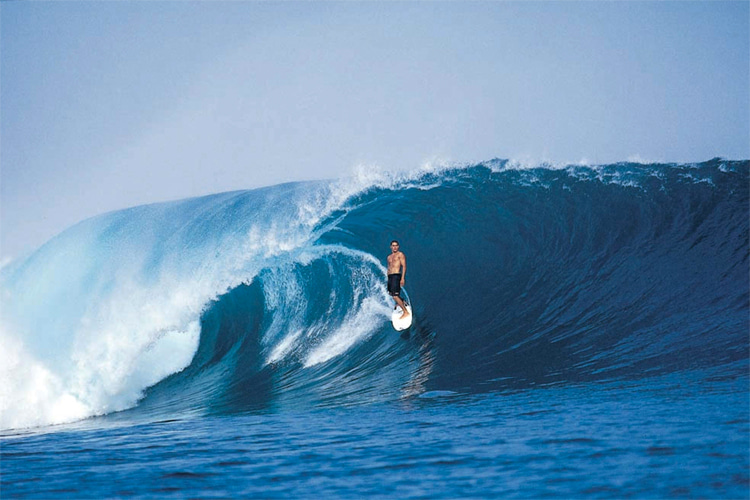Welcome to G-Land, one of the most special places for Indonesian surfing. Here's everything you must know about the Javanese world-class left-hand reef wave.
G-Land is a magical place.
Located in the Grajagan Bay, Banyuwangi, the remote and perfect left-hander is a boat ride from Bali on the eastern tip of Java, Indonesia.
Its exact location is Plengkung Beach.
The first thing you'll notice when arriving at this tropical paradise is that you're in the middle of the jungle, surrounded by endangered species - like the banteng - and pure savanna.
G-Land is unlike anything in the surfing world.
"If you've never seen it before, it's actually really hard to imagine," underlined 1970s surfing legend Jeff Hakman.
"Describing it is almost impossible. It's just too vast and too wild."
Here's the story and mechanics of the one-and-a-half kilometers of exposed reef and its white-sand beaches.
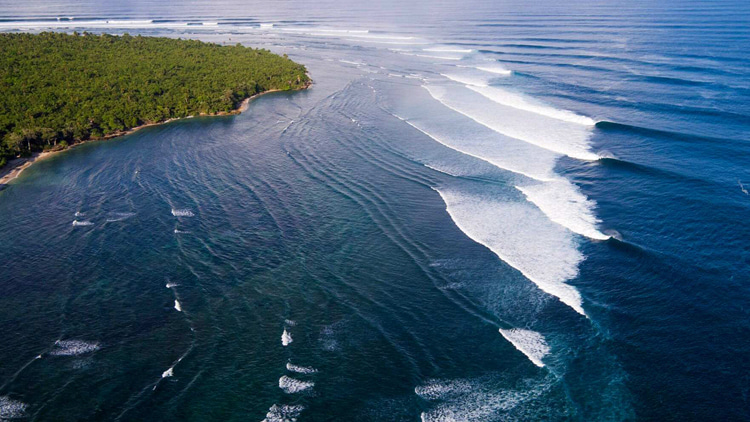
The History of Grajagan Bay
Bob Laverty and Bill Boyum were the first surfers to ride Grajagan Bay in 1972.
Laverty had spotted the surf break earlier during a flight from Jakarta to Bali. Later, he was joined by Boyum on a motorcycle trip to the East Javanese fishing village.
The duo filled their backpack with supplies, ferried across the bay, and then followed the shorefront edge of the Plengkung Beach forest.
After arriving, the American adventurers surfed perfect six-to eight-foot waves and camped on the beach near the jungle.
Tragically, Laverty had an epileptic seizure and drowned while surfing Uluwatu just a few days after returning to Bali.
Bill's brother, Mike Boyum, opened the G-Land Surf Camp two years later. Initially, in 1974, the surf resort featured three wooden huts.
"For three years, the only surfers at G-Land were the Boyum brothers and a few hand-picked guests, including Gerry Lopez and a hot Australian goofy-footer named Peter McCabe," notes Matt Warshaw, author of "The Encyclopedia of Surfing."
"When the surf was medium-sized, and the tide was in, making the waves a bit less critical, Lopez and McCabe rode together in what Lopez called their Blue Angels act, weaving and crisscrossing their way down the reef."
Grajagan Bay's surfing potential was kept secret for a while, but with the opening of the world's first surf camp, G-Land started appearing on multiple magazine covers and films.
Movies like "In Search of Tubular Swells" (1977), "Storm Riders" (1982), "Filthy Habits" (1987), "The Search (1992), "The Endless Summer II" (1994), and "Metaphysical" (1997) unveiled Java's lost surfing gem.
The World's First Surf Camp
In 1977, Mike Boyum registered the camp as the Blambangan Surfing Club and began taking week-long reservations and accepting ten surfers at a time, $200 a person, with an additional transportation fee from Bali.
Magazine interviews and articles put Grajagan Bay on the surf radar and, by 1982, a ten-day package cost $1,000.
Gerry Lopez was one of its first customers. After his maiden surf trip, Mr. Pipeline fell in love with G-Land and made it his spiritual home.
"It was our surfing monastery. We should never have told anyone," Lopez once revealed Lopez.
Legendary swimmer, surfer, and windsurfer Fred Haywood was one of the early wave riders to reach G-Land in the early 1970s.
The Maui waterman traded waves with Lopez at the Indonesian wonderland.
Meanwhile, Boyum, the mastermind behind the original G-Land surf camp, entered the drug trafficking world and was eventually arrested and extradited to California.
He served several years in prison and died on the 43rd day of a fast at Cloud 9 in the Philippines.
Michael Oblowitz's "Sea of Darkness" is a controversial documentary that tells the story of how Mike Boyum and Martin Daly embarked on an adventure and surf exploration lifestyle.
Today, consistent surf and a massive lineup transformed G-Land into a crowded surf break during peak season with over 200 surfers in the water simultaneously.
Despite malaria, the shallow reef, and tsunami alerts, Grajagan Bay still is one of the most visited surf breaks on the planet.
The Surf Conservation Partnership (SCP), a joint venture between Save The Waves Coalition and Conservation International, is working with the national conservation organization Konservasi Indonesia to safeguard local surf breaks and conserve surrounding beaches, forests, and coral reef ecosystems.
The collaboration aims to support action in G-Land to protect coastal ecosystems, address plastic pollution, restore critical habitats, strengthen sea turtle protection, and build capacity for long-term conservation of this legendary wave.
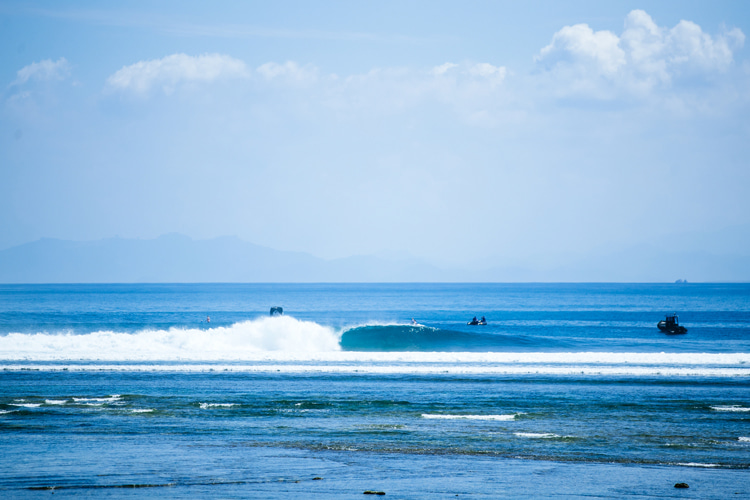
G-Land and Competitive Surfing
G-Land is arguably one of the world's longest and most challenging reef breaks.
As a result, the heavenly-shaped panoramic left-hand wave became a dream spot for professional competitive surfing.
The inaugural Quiksilver Grajagan Pro took place in 1995.
The historical event won by Kelly Slater was blessed with four-to-eight-foot waves for the entire week of the event.
Shane Beschen and Luke Egan won the G-Land titles in the following two years before the contest was canceled due to social and political unrest and global economic issues.
"G-Land is where the concept of a 'Dream Tour' was conceived for us back in the day," explained Kelly Slater.
"It was the first event where we went fully remote in the search for perfect waves and felt like we were on a surf trip or an adventure where there happens to be a contest, and not much has changed."
Throughout the late 1980s and 1990s, Tom Carroll was one of the stand-out pro surfers taking on the world-class left-hand Indo stretch of reef.
The first women's Championship Tour heat at the famed Indonesian surf machine took place on May 28, 2022.
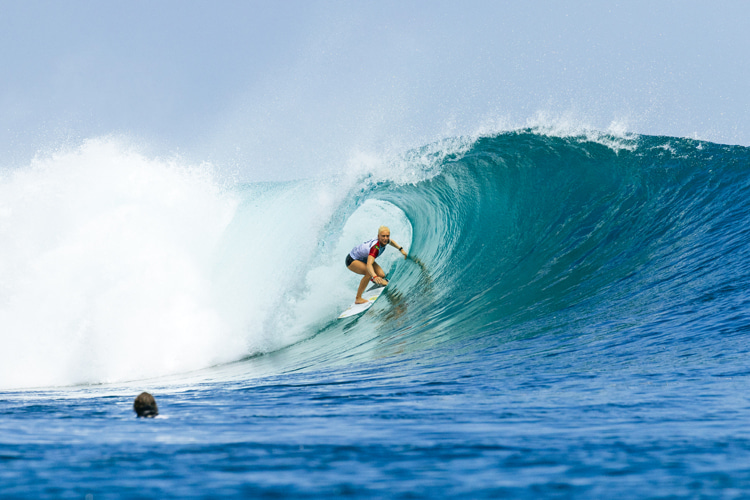
The Mechanics of G-Land
G-Land favors light offshore winds blowing from the east.
Most of the time, you'll find clean surfable waves along almost the entire stretch of the reef.
Grajagan Bay is known for its dependable trade winds and consistent swell supply from the Indian Ocean.
The SE trade season usually goes from April to October and the June-September high season slot often shows incredibly high consistency for groundswells over three feet (one meter).
Averages show a solid period of 14 seconds around the eight-foot (2.5 meters) mark, and bombing swells sometimes hit 13 feet at 20 seconds.
Winds are reliably SE from April and can still have the odd offshore day as late as December.
However, the transition months of March and November can have oscillating winds blowing mainly from the S before shifting W-NW for the wet season.
There is a big and a small tide each day with a range reaching about 2.5 meters. Therefore, G-Land experts will always try to time their visits with a full or new moon.
G-Land - the surf break itself - features three main sections: Kong's, Money Trees, and Speedies (or Speed Reef).
Kong's
Kong's is the name for G-Land's opening section.
It is also the uppermost and furthest out take-off zone on the point and the most exposed area to incoming swells.
Although sometimes unpredictable and hard to read, it produces rides up to 300 yards. With a W swell, you'll get long barrels here.
Kong's is often the shifty, messiest section of the perfectly-angled reef, but it works when it's when small.
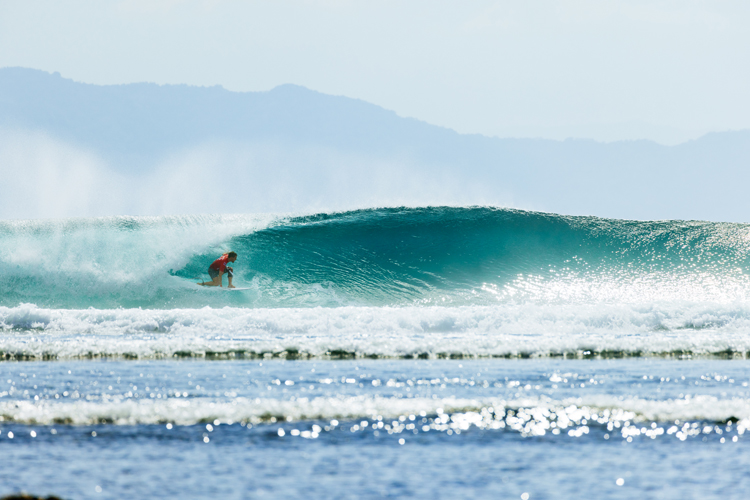
Money Trees
Money Trees is G-Land's long mid-section wall.
It is by far the most surfed section and delivers barreling waves that break up to eight feet and peel for up to 300 yards.
The tubes undulate from large pits to tight, high envelopes - getting caught behind is normal.
Money Trees shines to life on an SSW swell. Look out for exposed reef and low tide, though.
Launching Pad
Launching Pad is an intermediate section between Money Trees and Speedies.
It only appears on moderate-to-heavy swells as wider rogue sets hit the patch of the reef beyond the regular whitewash line.
They look like they are tapering into nothing before jumping up and launching into the pedal-to-the-metal section - Speedies.
Speedies/Speed Reef
Speedies is Grajagan's funneling inside break and G-Lands premier section. Despite being fickle, it often pumps double overhead hollow barrels with a south swell.
It's a long section capable of taking you on a flawless 200-yard ride inside the tube for 15 seconds.
Making the drop while drawing the right line and maintaining velocity is crucial as it doesn't let up or offer an easy escape.
The reef becomes a real threat here, as the area features the sharpest, shallowest coral.
During a surf contest, the judge's tower is installed on the reef; when it's big, there's an alternative land tower.
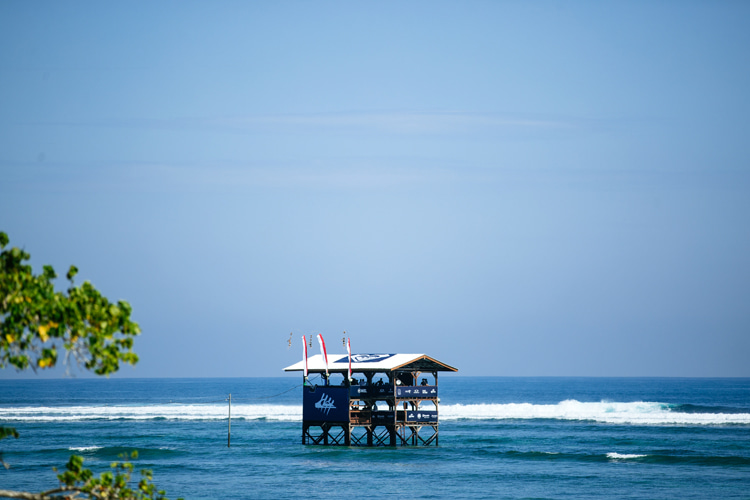
Chicken's
Chicken's is the protected end of the reef, and it should be used during powerful swells.
20/20s
20/20s is a surf spot located around a 20-minute walk north of the surf camp. It features a break in the fringing reef that allows some smaller, slower left-handers to wrap into a sandy channel that also sports a swift, shallow right-hander on the other side.
Tiger Tracks
Tiger Tracks Lefts can be found a 60-minute walk from the camp and provides occasional tubes down an ill-defined reef.
Tiger Tracks Rights is located on the other side of the sandy bay. It's a fun and forgiving right-hand wave that invites you to perform hard turns and a rare barrel for frustrated regular-footed surfers.
G-Land breaks best from May to October, as winter storms in the Indian Ocean regularly generate four-to eight-foot swells, with the occasional 10-to-12-footer.
Favorable swells are groomed as they reach the shore by Java's reliable southeast offshore tradewinds.
"The waves along Grajagan's enormous coral-studded lava reef are more shifty and powerful than those found nearly anywhere else in Indonesia," adds Warshaw.
When it comes to the weather, the dry season runs from May through October. It is hot, with gentle sea breezes and occasional overnight rains.
The average air and water temperature is 82 °F (28 °C).
The wet season depends on the winds, but December and January are usually no-go months.
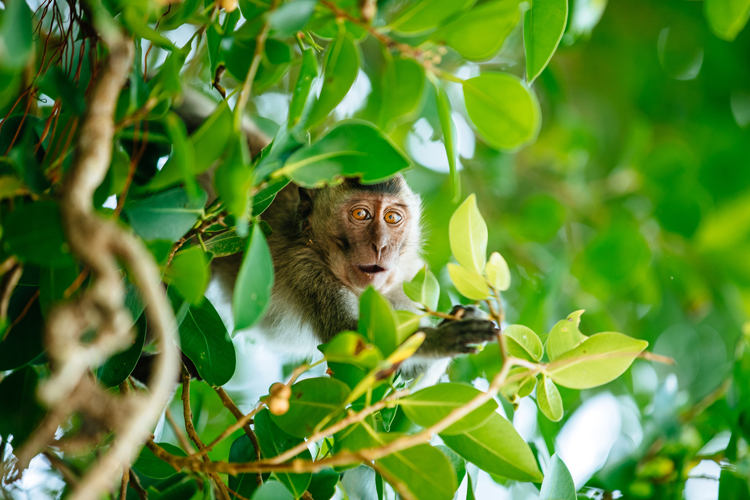
Extra Tips
G-Land is an isolated wilderness. You'll see sea snakes, urchins, primates, and bugs.
Malaria mosquitoes are all-year inhabitants, so take precautions before even getting on a plane to Indonesia.
Because Grajagan Bay is often crown, plan your sessions accordingly.
Opt for an early morning or late afternoon surf, and you'll find glassy conditions. Paddle out at high tide and walk carefully at low, preferably in booties.
If possible, try to punch, fly or get out the back of shutdown sections rather than straighten out over the shallow reef.
Finally, time your paddle-outs between sets.
